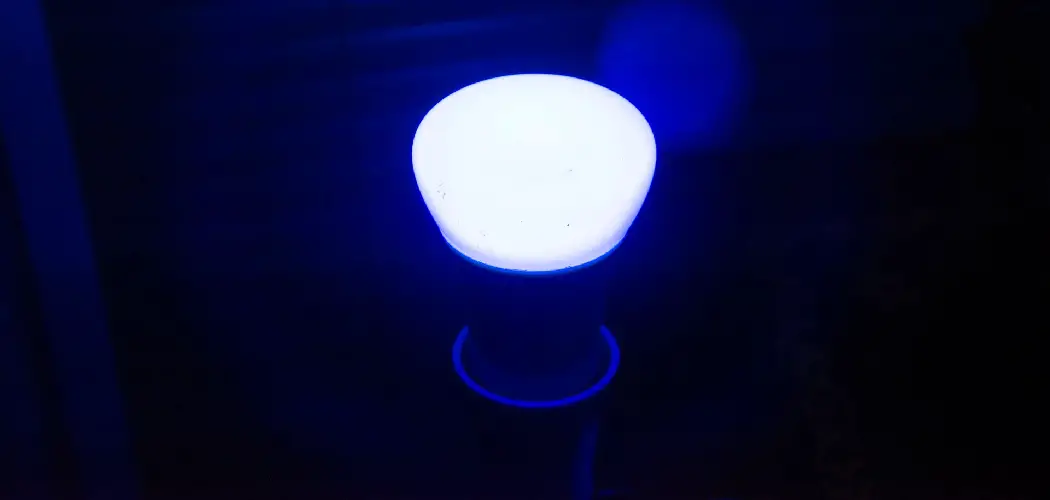Lighting plays a crucial role in home improvement, and it significantly impacts the overall look and feel of a room. Dimming the lights adds versatility to the ambiance and creates a cozy and inviting atmosphere. Many people prefer to install LED lights, but what if you don’t have a dimmer switch installed?
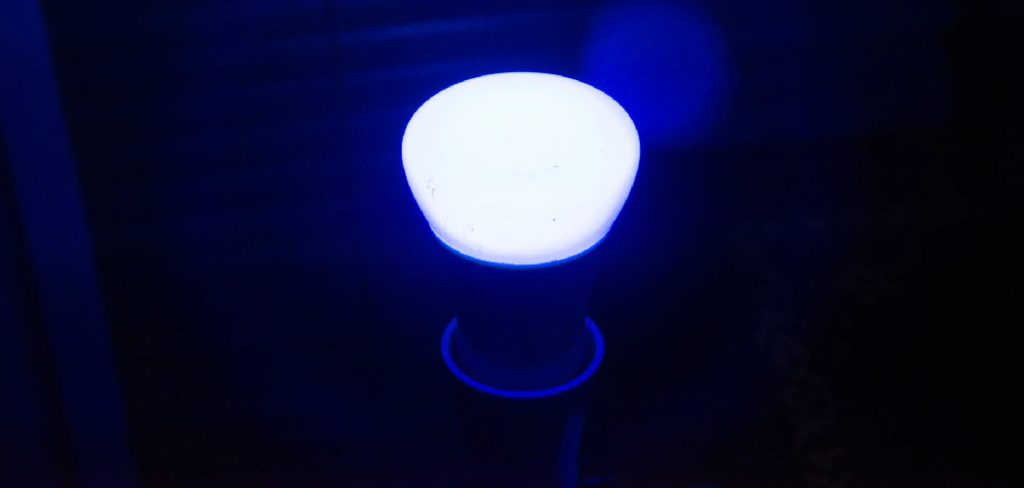
Many homeowners believe they require professional assistance to reduce LED lights’ brightness, which is not always the case. In this blog, we will explain how to dim LED lights without a dimmer switch and how you can do it yourself without much effort.
Can You Dim Led Lights Without A Dimmer?
Have you ever wondered how to dim LED lights without a dimmer? Despite what you may think, it is possible! There are a few ways to achieve a dimmer effect on LED lights without installing a dimmer switch, including a resistive dimmer or a pulse-width modulator.
You can even use a simple on/off switch and adjust the amount of light by changing the number of LED bulbs in the fixture. So whether you’re looking for a cozy ambiance or just trying to save energy, dimming your LED lights has never been easier.
Why Should You Dim Led Lights Without A Dimmer?
LED lights are becoming increasingly popular in households and workspaces due to their energy-saving benefits and long-lasting quality. However, what happens when you want to dim your LED lights but don’t have a dimmer switch? Luckily, several creative ways exist to achieve your desired lighting level without purchasing additional equipment.
Dimming your LED lights can create a relaxing and cozy ambiance, perfect for unwinding after a long day or setting the mood for a romantic evening. So, whether you use a lamp shade, a light bulb with a lower wattage, or even a colored light filter, dimming your LED lights can revolutionize how you view and interact with your living space.
7 Ways to Follow on How to Dim Led Lights Without A Dimmer
1. Use a Lamp Dimmer
One of the easiest ways to dim an LED light without a dimmer switch is by using a lamp dimmer. You can purchase a lamp dimmer online or from a hardware store. This device is straightforward to use; you plug it into an electrical socket and then connect it to your LED bulb. With the help of the lamp dimmer, you can adjust the brightness level manually. It’s a simple and cost-effective method.
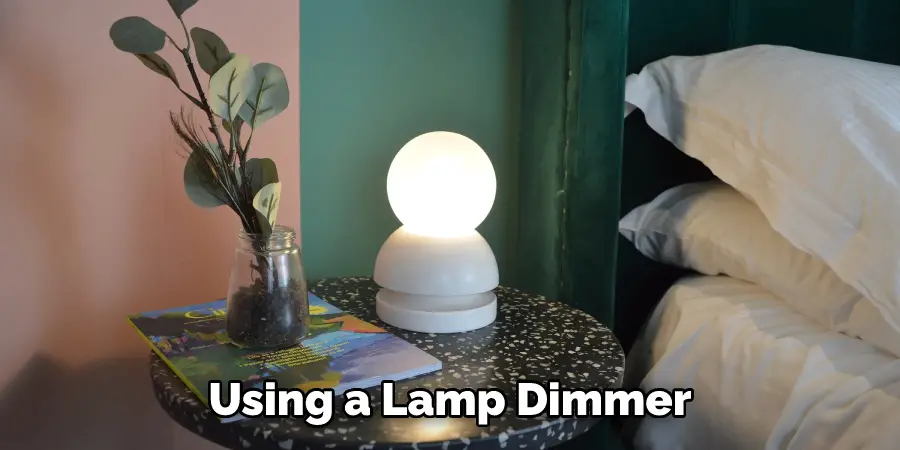
2. Use a LED Light Tape
Another method to reduce the brightness level of LED lights is by using LED light tape. You can apply the LED tape to the back of your TV or under your shelves to create an ambient glow. The LED tape usually comes with a remote control, allowing you to manually dim or brighten the light. It’s an easy and convenient way to add dimming to your LED lights.
3. Use a Traditionaemits Incandescent Light Bulb
You can also use a traditional incandescent bulb with your LED bulbs. Incandescent light emits a warm light that perfectly matches LED light bulbs’ cool light. The incandescent bulb must be of lower wattage than the LED bulbs. By replacing at least one LED bulb with an incandescent bulb, you can decrease the overall brightness level of the LED lights. However, this method should only be used for short periods, as it may increase energy consumption and heat up the room.
4. Change the Color Temperature
LED lights come with different color temperatures. You can easily change the color temperature to decrease the brightness level. The warmer the light, the softer it is, and vice versa. By choosing warmer-colored LED bulbs, you can effectively reduce the brightness level without compromising the ambiance.
5. Adjust the Electrical Voltage
The next method is to adjust the electrical voltage. This method requires professional assistance and should not be attempted by a layperson. However, if you want to reduce the overall brightness of all the LED lights in your home, you can ask an electrician to install a voltage regulator. This device controls the current, subsequently reducing the brightness level.
6. Use a Wall Dimmer
If you have wall lights in your home, you can install a wall dimmer to reduce the brightness level without needing a dimmer switch. Many people fear that the installation process may be too complex; however, it is quite straightforward. You can purchase a wall dimmer online or from any hardware store and install it quickly.
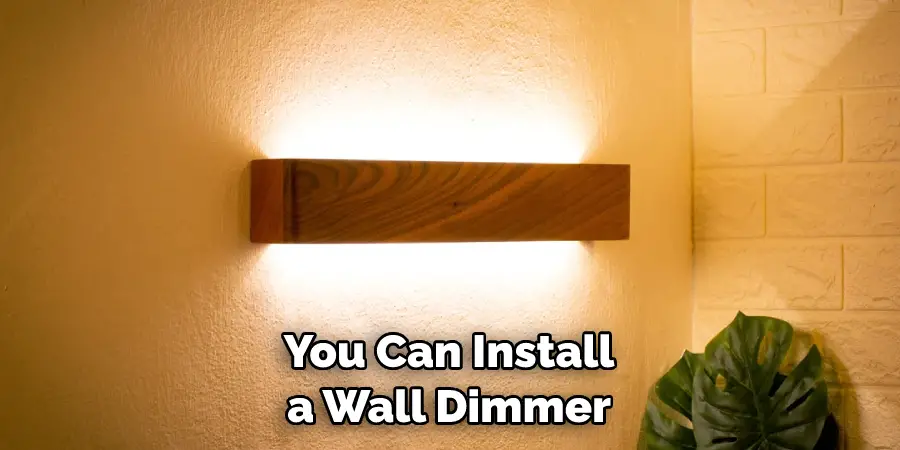
7. Use a Brightness Controller
The last method to dim LED lights without a dimmer is by using a brightness controller. You can purchase a brightness controller online or from any hardware store and connect it to your LED bulb. This device allows you to manually adjust the brightness level, creating an ambient setting in your home.
These are just a few methods that you can use to dim LED lights without a dimmer switch. With the right equipment and a little knowledge, you can easily adjust the brightness level to create an ambient atmosphere in your home. So, if you’re looking for ways to reduce the brightness of your LED bulbs, try these methods.
5 Considerations Things When You Need to Dim Led Lights Without A Dimmer
1. LED Wattage
The wattage of the LED lights needs to be taken into consideration when dimming them without a dimmer switch. If the wattage is too high, it could cause damage to the LED lights and shorten their lifespan. It is important to check the wattage of your LED lights before attempting to dim them without a dimmer switch.
2. Light Temperature
Different colors of light can have different effects on how you perceive brightness. For example, warm white light appears brighter than cool white light, even though they both may have the same wattage. When dimming your LED lights without a dimmer switch, it is important to consider the light temperature to achieve the desired effect.
3. Power Source
The power source used for your LED lights should also be considered when dimming them without a dimmer switch. If you are using an AC power source, you may need to use an additional step-down transformer to reduce the voltage and current going into your LEDs to safely and effectively dim them without a dimmer switch.
4. Dimmer Circuit
Suppose you want more control over how much you can dim your LEDs without a dimmer switch. In that case, you may want to consider building or purchasing a custom-made circuit that will allow you to adjust the voltage and current going into your LEDs in order to achieve the desired level of brightness or darkness. This type of circuit can be quite complex and should only be attempted by those with experience in electronics design and construction.
5. Timer Control
Another option for controlling the brightness of your LEDs without a dimmer switch is by using a timer control system such as an occupancy sensor or motion detector that will automatically turn off or reduce the brightness of your LEDs after a certain amount of time has passed since they were last activated or turned on. This type of system can help save energy and money while still providing adequate lighting for any given area or space when needed.
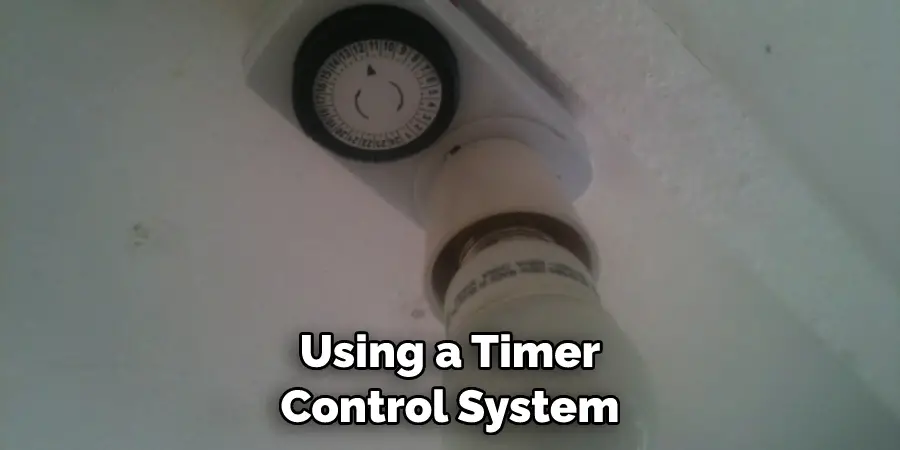
Benefits of Dim Led Lights Without A Dimmer
Many people opt for bright, intense lighting when lighting a room. However, our eyes are sensitive and sometimes crave a more subdued atmosphere. That’s where dim LED lights come in handy. Unlike traditional incandescent bulbs, LED lights can dim without a dimmer switch.
Not only does this save you money and hassle, but it also allows for more versatility in using your lights throughout the day – from bright and energizing in the morning to cozy and calming in the evenings. With the added bonus of being more energy efficient and longer lasting, switching to dim LED lights is a smart choice for your wallet and the environment.
Some Common Mistakes People Make When Trying to Dim Led Lights Without A Dimmer
Dimming LED lights can be a great way to create the perfect ambiance in your home, but trying to dim them without a proper dimmer can lead to a few common mistakes you’ll want to avoid. One mistake is simply using a regular on/off switch and attempting to regulate the LEDs’ brightness by controlling the time they are turned on. This method results in a flickering effect that’s less than ideal.
Another mistake is using a traditional dimmer switch designed for incandescent bulbs instead of one designed specifically for LEDs. This can cause the dimmer to overheat and potentially damage the dimmer and the LED lights. To avoid these mistakes and ensure successful dimming, it’s best to invest in a high-quality LED-compatible dimmer switch that will provide smooth, consistent dimming over a wide range of light levels.
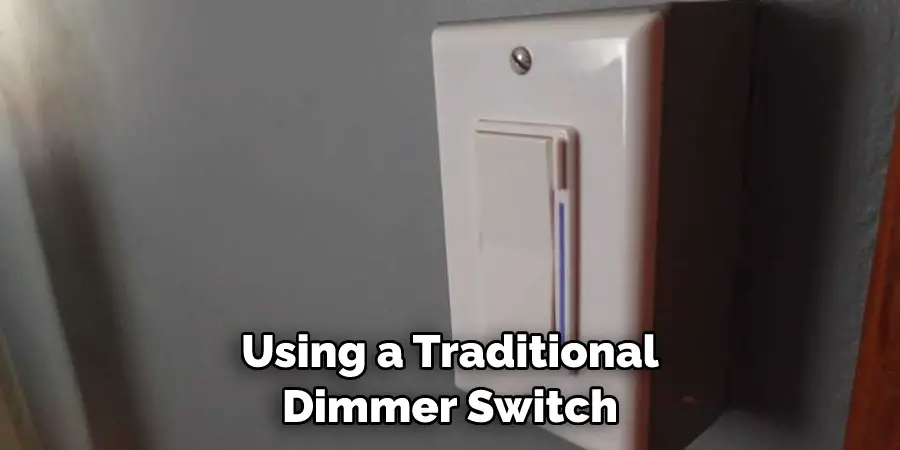
Conclusion
Dimming your home’s lights is an effortless way to create a relaxing and cozy atmosphere. However, you don’t always need a dimmer switch to dim your LED lights. As we have explained above, many ways to reduce LED lights’ brightness levels include using a lamp dimmer, LED light tape, traditional incandescent bulb, changing color temperature, and adjusting the electrical voltage.
These methods are simple, cost-effective, and easy to apply, helping transform your LED lights from dazzling to a soft and warm ambient glow. Thanks for reading our post about how to dim led lights without a dimmer.
